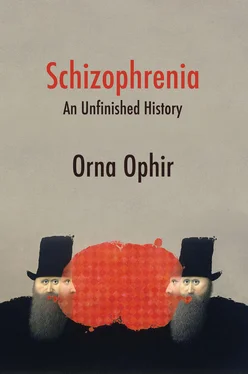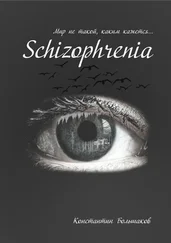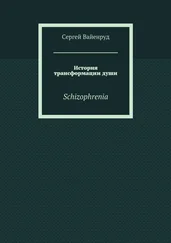As mentioned, yet another differentiation was created within the psychoses between forms of psychosis that were seen as caused by external agents, such as toxic substances, infections, syphilis, alcoholism, and brain infections. These were considered to be based on “exogenous” causes. Yet other forms of psychosis, such as neurasthenia, hysteria, epilepsy, and migraine were considered to arise from internal sources and were thus labeled “endogenous.” 101
In the nineteenth century, mental disorders thus came to be thought of as classifiable not unlike plants, animals, or minerals, according to either external features (i.e., their visible symptoms) or, as was common practice in other fields of medicine, based on their presumed causes. 102It was precisely with such a classificatory zeal that mental illnesses were increasingly approached. What emerged was the understanding that there is a correspondence between the causes of different mental illnesses, some possible visible damage to the brain, various observed symptoms , and the final outcome of the condition. This growing insight enabled Emil Kraepelin (1856–1926), the main figure discussed in the next chapter, to group together several existing diagnoses into two large nosological entities, which would come to be known as “the twin pillars” of the modern classification of so-called psychiatric diseases: “manic-depressive insanity,” on the one hand, and dementia praecox , the precursor of schizophrenia, on the other.
The criterion of “prognosis,” or outcome, was central to Kraepelin’s system of diagnosis, and was more precisely defined in terms of “curability” and “incurability.” In Kraepelin’s early writings, there were thus two groups of “madness”: manic-depressive insanity, where the hope of “complete restoration” was possible, and dementia praecox , a steadily progressive kind of mental illness, whose inevitable outcome was deterioration and which resulted in dementia.
Psychiatric Classification and the Making of Schizophrenia
Western history, since its early depiction in the Old Testament, had shown two fundamental ways of conceiving madness. While the first implies that health and illness exist on a spectrum as relative states of greater or lesser equilibrium , the second view implies that mental illness is categorically different from mental health.
The diagnosis of dementia praecox , which later gave way to schizophrenia, was born in the nineteenth century, a period that in the history of madness, mad people, and mad institutions was characterized by attempts on the part of the medical profession to create distinct categories of so-called disease entities as natural kinds . Just as botanists had shown that, based on their natural properties, pine trees were similar to each other and different from elm trees, psychiatrists, doctors, and other clinicians hoped to reveal the exact nature of mental disorders, and to differentiate between their distinct natural kinds in the clearest of terms. Unlike some of the earlier views of mental disorders, which saw the body and mind as constantly oscillating between health and illness, and considered health as a form of humoral and moral equilibrium, the mainstream view of alienists in the nineteenth century was that mental disorders were completely different in kind from normal mental states.
Nineteenth-century European medicine, with its laboratories and hospitals, supported the notion that diseases are specific, objective, physical entities that exist outside their unique manifestation in a particular human being. 103Regardless of the place or person in which they are located, disease entities were believed to have typical symptoms, to follow specific courses, produce particular outcomes, and obey an underlying biological mechanism. These disease units were viewed not only as different from health, but also as having clear boundaries that separated them from one another. It is in the framework of this episteme , to cite Michel Foucault’s well-known term, that we see a general shift from “dis-ease” to diseases and from “ mal-aise ” (a state of discomfort) to malaise (an illness). 104It is in the wake of this transformation of “dis-ease,” experienced as discomfort, into a disease, seen as an externally diagnosed separate entity, that the downright pessimistic diagnosis of dementia praecox , with its grim prognosis, and in its wake that of schizophrenia, came into being.
1 1. We use the term “patient” as it connotes pati or suffering.
2 2. Roy Porter, “The patient’s view: Doing medical history from below,” Theory and Society 14, 2 (1985): 175–98.
3 3. Mark Ellerby, “Schizophrenia: Stigma and the impact of literature,” Schizophrenia Bulletin 44, 3 (2018): 466–7.
4 4. Emil Kraepelin, Dementia Praecox and Paraphrenia, trans. R. Mary Barclay; ed. George M. Robertson (New York: Krieger Publishing, 1971 [1919]), 242.
5 5. Susan Weiner, “The details in schizophrenia,” Schizophrenia Bulletin 44, 4 (2018): 707–9.
6 6. Ibid.
7 7. Ibid.
8 8. Ibid.
9 9. See Tanya M. Luhrmann and Jocelyn Marrow (eds.) Our Most Troubling Madness: Case Studies in Schizophrenia Across Cultures (Oakland, CA: University of California Press, 2016).
10 10. See John Weir Perry, The Far Side of Madness (Englewood Cliffs, NJ: Prentice-Hall, 1974).
11 11. D. V. Jeste, R. Carman, J. B. Lohr, and R. J. Wyatt, “Did schizophrenia exist before the eighteenth century?,” Comprehensive Psychiatry, 26 (1985): 493–503, 502.
12 12. Michel Foucault, Madness and Civilization: A History of Insanity in the Age of Reason (New York: Random House, 1965), 254.
13 13. Madalina Vârtejanu-Joubert, “Representations of madmen and madness in Jewish sources from the pre-exilic to the Roman-Byzantine period,” in G. Eghigian (ed.), The Routledge History of Madness and Mental Health (New York: Routledge, 2017), 38. See also Madalina Vârtejanu-Joubert, Folie et société dans l’Israël antique (Paris: L’Harmattan, 2004).
14 14. Deuteronomy 28:28.
15 15. Vârtejanu-Joubert, “Representations of madmen,” 20.
16 16. Daniel 4:33.
17 17. Mark 5:2–9.
18 18. Mark 5:9.
19 19. Mark 5:15.
20 20. Samuel, 14:12.
21 21. George Rosen, Madness in Society (Chicago, IL: University of Chicago Press, 1968), 11.
22 22. Karl Jaspers, “Der Prophet Ezechiel, Eine pathographische Studie,” in Arbeiten zur Psychiatrie, Neurologie und ihre Grenzgebieten: Festschrift für Kurt Schneider (Heidelberg: Verlag Scherer, 1947), 77–85. See also George Stein, “The voices that Ezekiel hears – Psychiatry in the Old Testament,” British Journal of Psychiatry 196, 2 (2010): 101.
23 23. Samuel 14:10.
24 24. Samuel 10:9.
25 25. Daniel 4:16.
26 26. Isaiah 28:21.
27 27. Vârtejanu-Joubert, “Representations of madmen,” 29.
28 28. Hagiga 3b, quoted in Vârtejanu-Joubert, “Representations of madmen,” 34.
29 29. Vârtejanu-Joubert, “Representations of madmen,” 34.
30 30. Caelius Aurelianus, On Acute Diseases and on Chronic Diseases, trans. I. E. Drabkin (Chicago, IL: University of Chicago Press, 1950).
31 31. Plato, Phaedrus, 265b2–6.
32 32. Phaedrus, 244b6–7.
33 33. Plato, Laws, XI, 934c7, trans. T. L. Pangle (Chicago, IL: University of Chicago Press, 1988), 337.
34 34. Chiara Thumiger, “Ancient Greek and Roman traditions,” in The Routledge History of Madness and Mental Health, 42–61.
35 35. Hysteria in Virgins, quoted in Mary R. Lefkowitz and Maureen B. Fant (eds.), Women’s Life in Greece and Rome: A Source Book in Translation, 3rd edn (Baltimore, MD: Johns Hopkins University Press, 2005), 243.
Читать дальше












